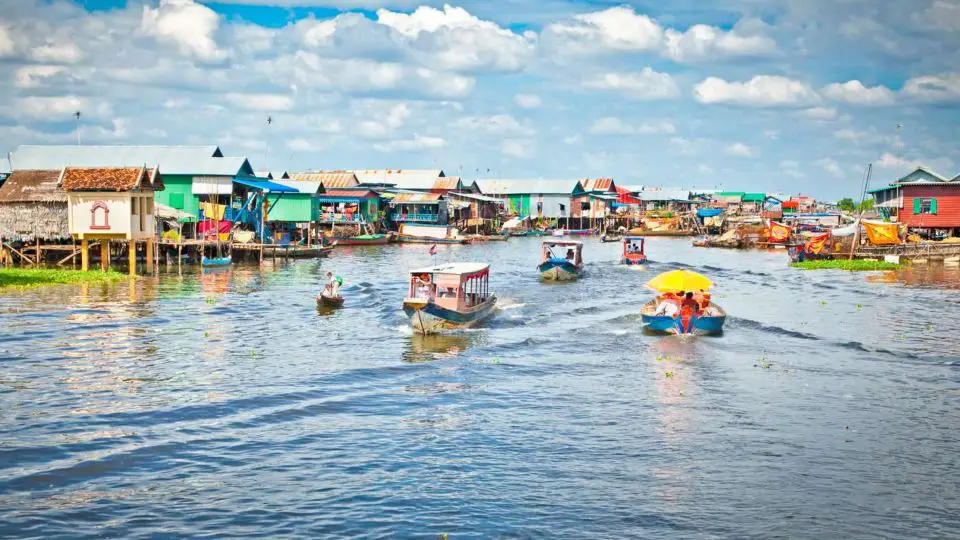Nestled in the heart of Cambodia, Tonle Sap Lake is the largest freshwater lake in Southeast Asia. This unique body of water is not only a vital resource for the local communities but also a fascinating destination for travelers.

In this article, we’ll explore the wonders of Tonle Sap Lake, from its ecological significance to the vibrant floating villages that call it home.
1. Overview of Tonle Sap Lake
Tonle Sap Lake is located in the central part of Cambodia and plays a crucial role in the country’s ecosystem. The lake’s size fluctuates dramatically between the dry and wet seasons, expanding from approximately 2,500 square kilometers to over 16,000 square kilometers. This seasonal transformation supports a rich biodiversity, making it one of the most productive inland fisheries in the world.
2. Planning Your Trip
To make the most of your visit to Tonle Sap Lake, it’s essential to plan ahead. The best time to visit is during the wet season (June to October) when the lake is at its fullest. You can reach the lake from Siem Reap, which is well-connected by road and air. Be sure to bring essentials like sunscreen, insect repellent, and a hat to protect yourself from the sun.
3. The Boat Trip Experience
Embarking on a boat trip is the best way to explore Tonle Sap Lake. Various types of boats are available, from small wooden boats to larger tourist vessels. The duration and cost of the trips can vary, but most tours last between two to four hours. During the trip, you’ll have the opportunity to witness the stunning scenery and observe the daily life of the local communities.
4. Exploring the Floating Villages
One of the highlights of a boat trip on Tonle Sap Lake is visiting the floating villages. These unique communities, such as Chong Khneas, Kampong Phluk, and Kampong Khleang, are built on stilts and float on the lake’s surface. Here, you can experience the vibrant culture and traditions of the residents, who rely on fishing and aquaculture for their livelihoods. Key attractions include floating schools, markets, and pagodas.
5. Wildlife and Nature
Tonle Sap Lake is a haven for wildlife enthusiasts. The lake and its surrounding areas are home to a diverse range of flora and fauna, including numerous bird species. Bird watching is a popular activity, with opportunities to spot rare and migratory birds. Conservation efforts are in place to protect the lake’s ecosystem, and eco-tourism initiatives aim to promote sustainable travel.
6. Cultural Insights
The historical significance of Tonle Sap Lake dates back centuries, with the lake playing a vital role in the rise and fall of ancient civilizations. The local communities have preserved traditional practices and livelihoods, offering a glimpse into Cambodia’s rich cultural heritage. Festivals and events, such as the Water Festival, celebrate the lake’s importance and bring together locals and visitors alike.
7. Tips for a Memorable Trip
To ensure a memorable and respectful visit, keep these tips in mind:
- Dos and Don’ts: Be mindful of local customs and traditions. Always ask for permission before taking photos of people.
- Respecting the Environment: Avoid littering and support eco-friendly practices.
- Safety Tips: Wear life jackets during boat trips and follow the guide’s instructions.
Conclusion
A boat trip on Tonle Sap Lake offers a unique and enriching experience, showcasing the natural beauty and cultural richness of Cambodia. From exploring floating villages to observing diverse wildlife, there’s something for everyone to enjoy. Plan your visit to Tonle Sap Lake and immerse yourself in the wonders of Southeast Asia’s largest freshwater lake.
